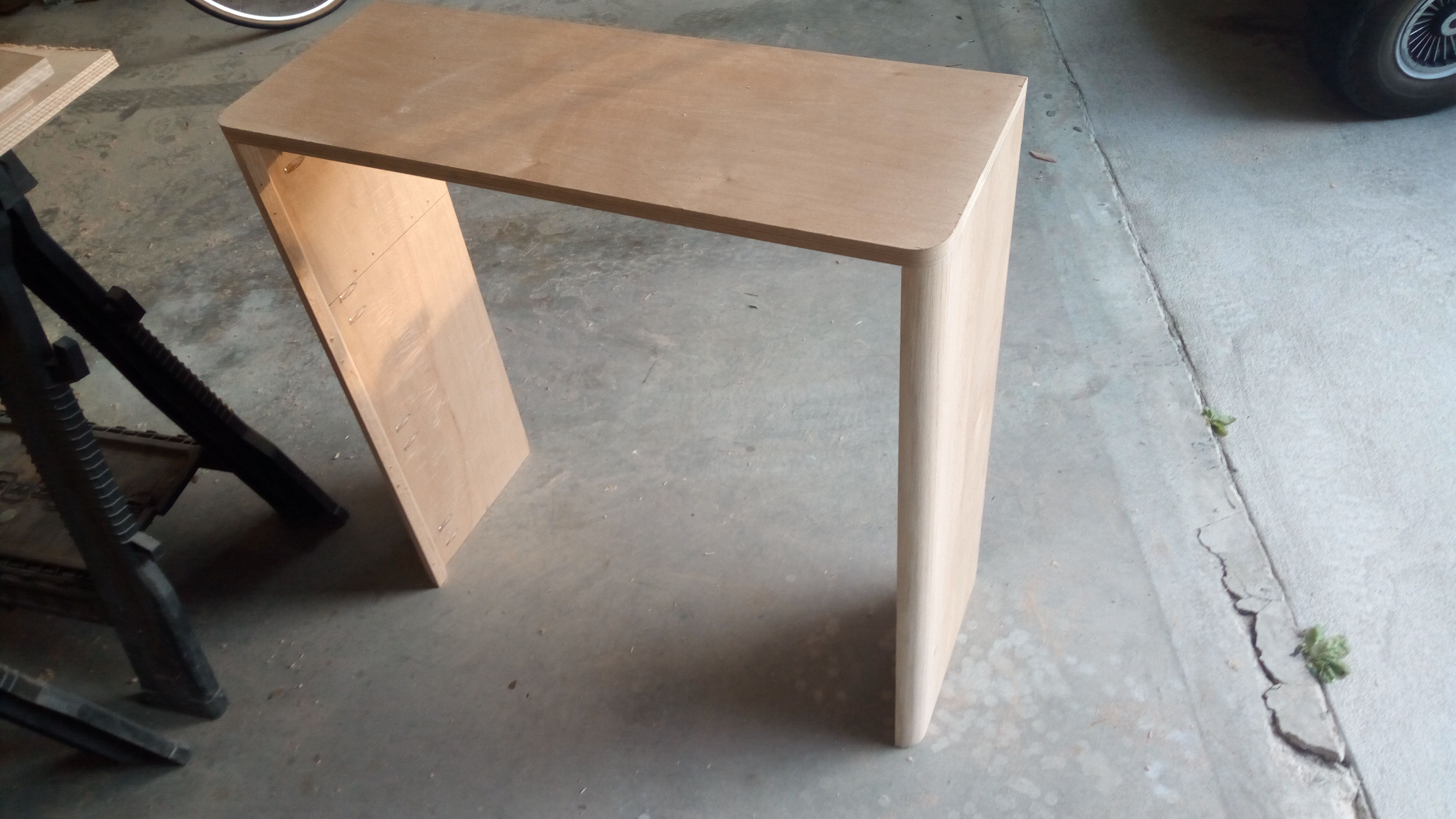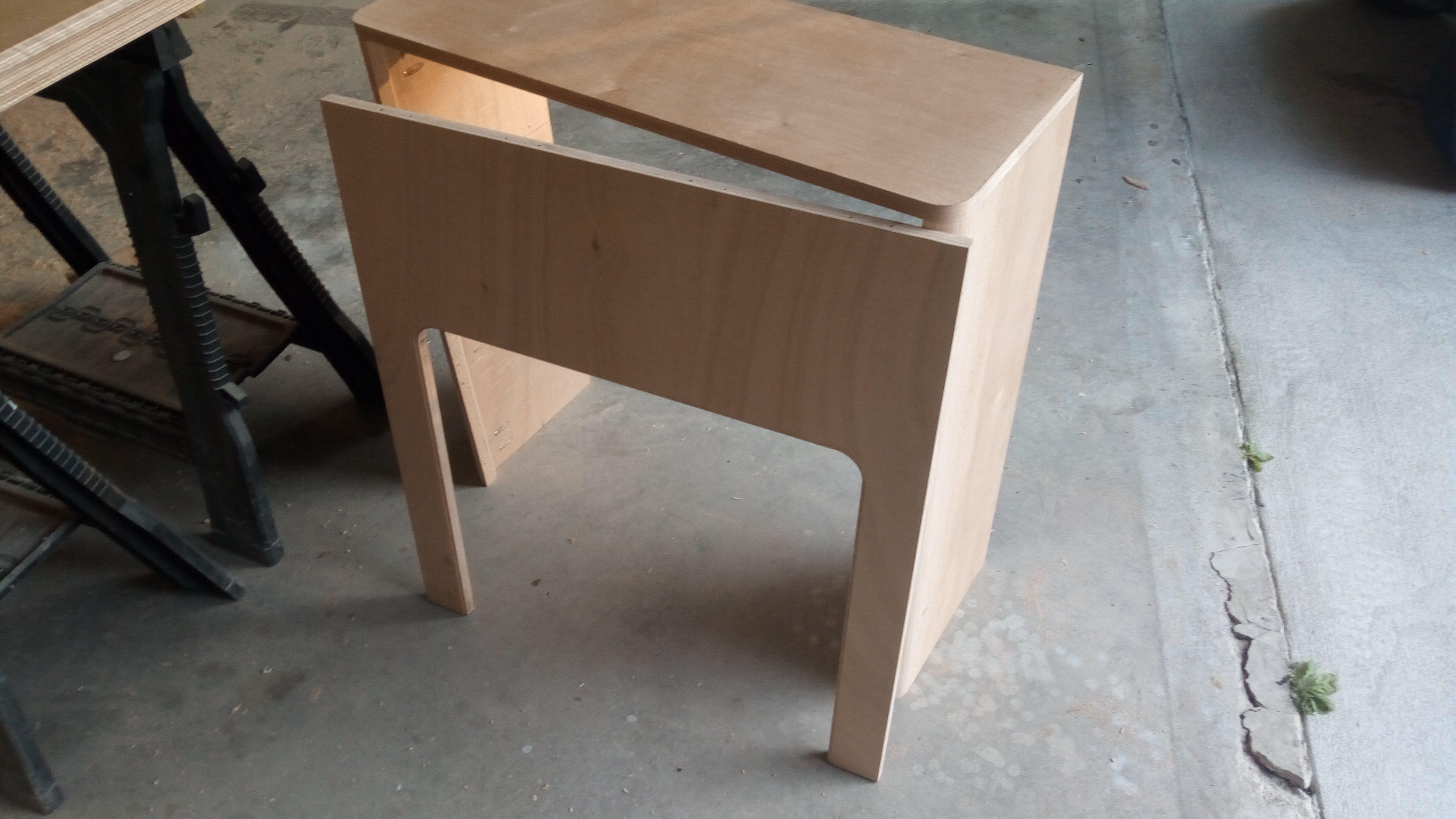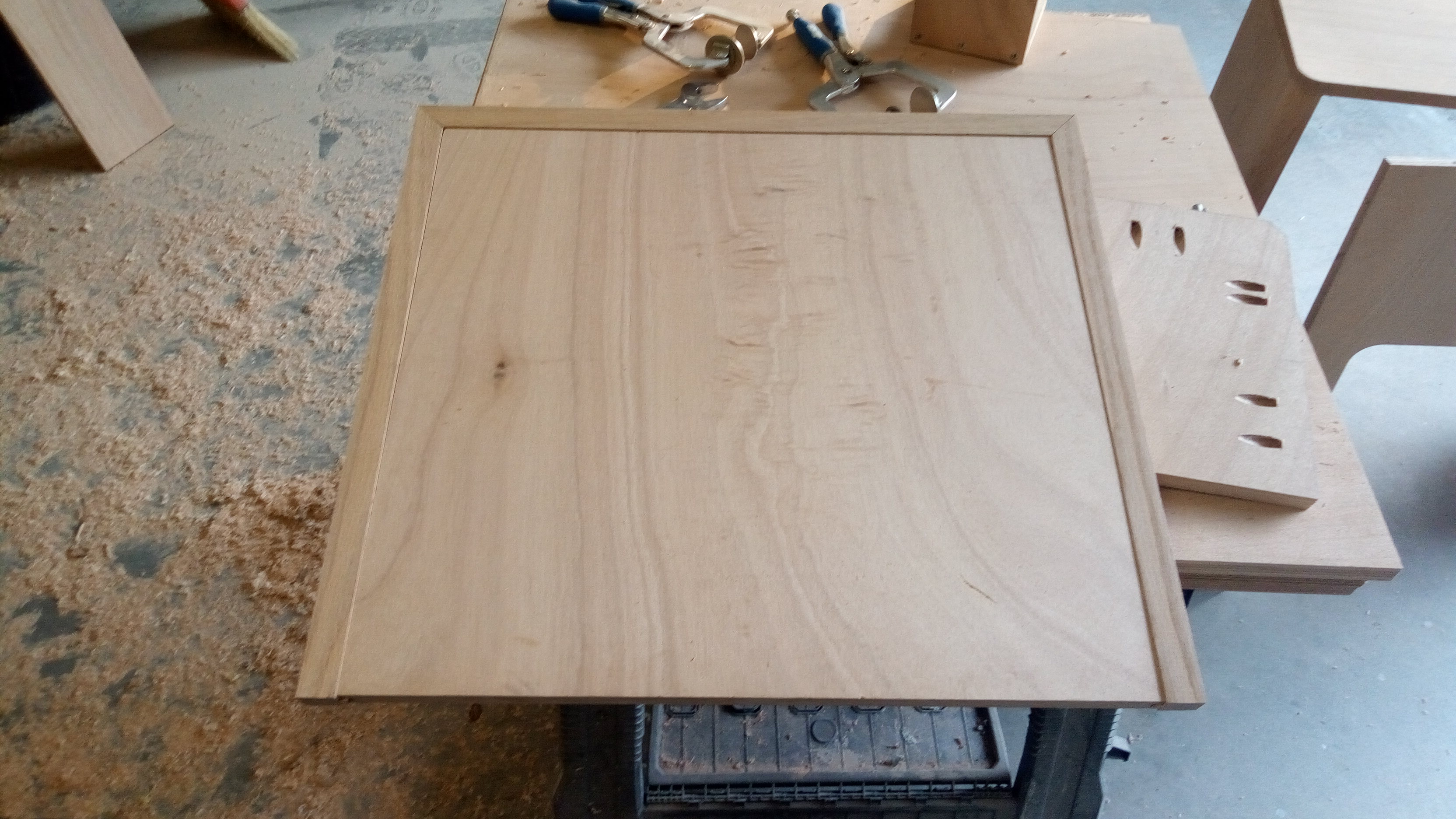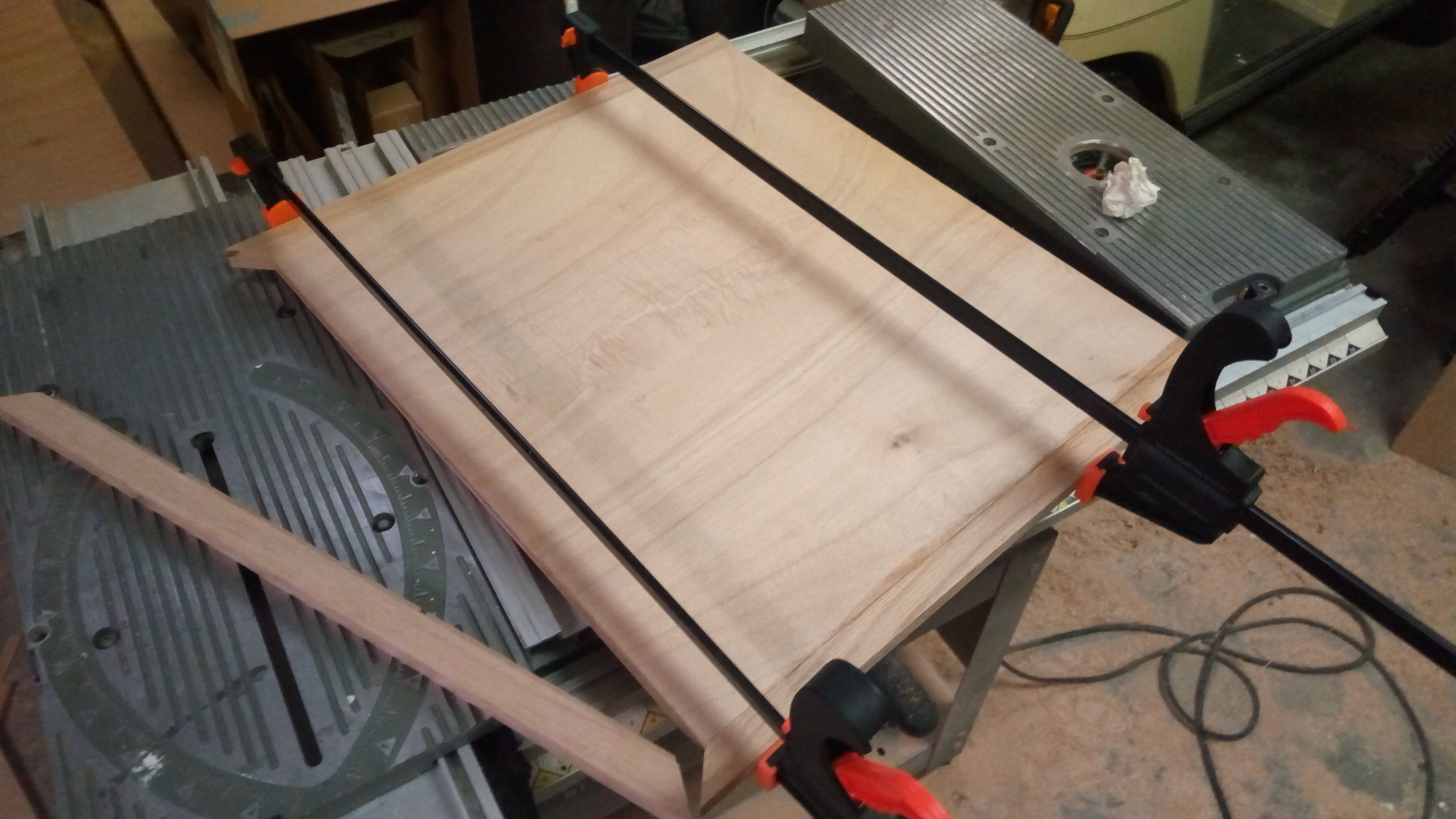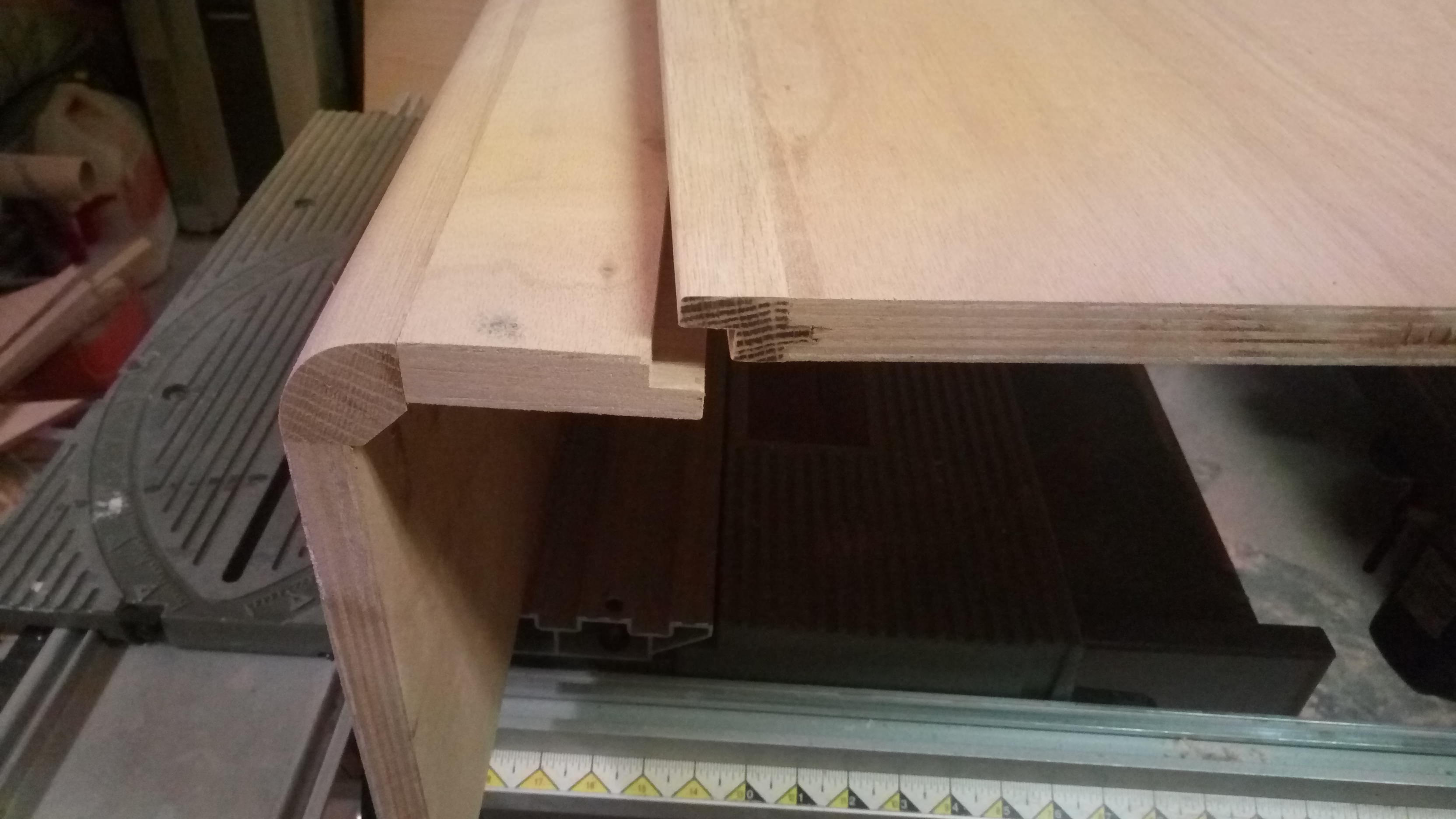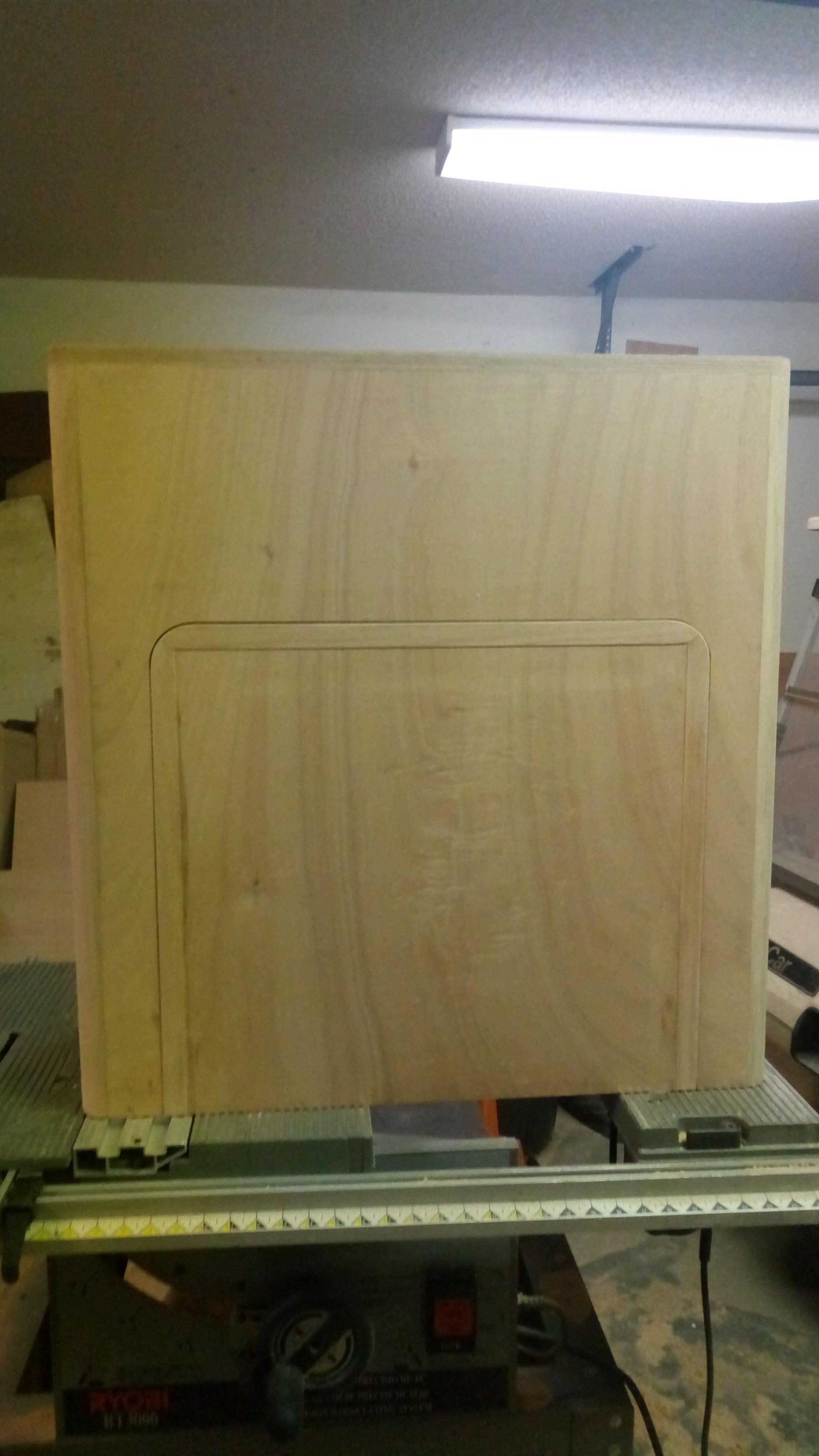I would try and get the screw that go into the plywood perpendicular to the ply. The way it looks now those screws will try and open the joint at assembly time
Les
Les
Screws should only be used to hold tight till the glue dries. Once the glue is dry, the screws could be removed and the joint would be just as strong.I would try and get the screw that go into the plywood perpendicular to the ply. The way it looks now those screws will try and open the joint at assembly time
Les
I'm looking at this option, but the need for specialized screws is one of the issues holding me up. Do the screws necessary for the pocket jig come in SS?pocket screws into the actual corner piece will draw it tight. While the corner bracing can be screwed perpendicular to the ply to hold the 90....?
Yep. Working on building a jig to do this!I would try and get the screw that go into the plywood perpendicular to the ply. The way it looks now those screws will try and open the joint at assembly time
Les
I'm still not on board with gluing the joints for these reasons:Screws should only be used to hold tight till the glue dries. Once the glue is dry, the screws could be removed and the joint would be just as strong.
I would also suggest using a 2x2 for the corner piece and forget the corner brace all together. Pocket screws through the plywood screwing into the corner piece as previously stated. I would also suggest mounting the plywood about a 1/16th inch deeper than the corner piece. This way you don't have to have the corner piece flat surface line up perfectly to the plywood. You will find the corner piece will have a slight amount of warp, and you will never get it perfectly flush along the whole length - therefore don't fight it. Set the plywood back some from the corner, and no one will see the imperfections. There is a reason cabinet makers don't try to line up the side pieces perfectly with the face frames. There is no such thing as a straight piece of wood. Mask what is not perfect.
Not a bad idea, but I'm not exactly on great terms with my local machine shop at the moment due to the bow pulpit debacle. My desire for the large radius corners is causing all the angst. It would be much easier to use 3/4 quarter-round pieces and 1x1 bracing to tie everything together but I'm going with form over function on this one.Respectfully, I think you're not seeing the forest for the trees.
You've been spending a lot of time thinking about optimal wood for the inside wedge, how to get the screw angles right, etc.
Here is what I would do, which would be a cinch to install, be stronger than anything, would never come apart, (unless you wanted it to, and would cost very little.
I would (no pun intended) make the inside support out of simple metal pieces. All you need are 2 bends, and 4 holes. I would make them 1" tall, so that you'd have one at the top, and one at the bottom.
The screws will all be at perfect right angles to each piece of wood. To install, you just clamp on the brackets, use a transfer punch to mark the holes, drill, put in screws & you're done.
Any metal shop with a brake can make these, and get a bucket-full made. You now have a way to do all your joinery.
For taller wood pieces, use 3 brackets instead of 2.
You can use either 16 guage stainless, or crs, and have a auto shop paint them brown.

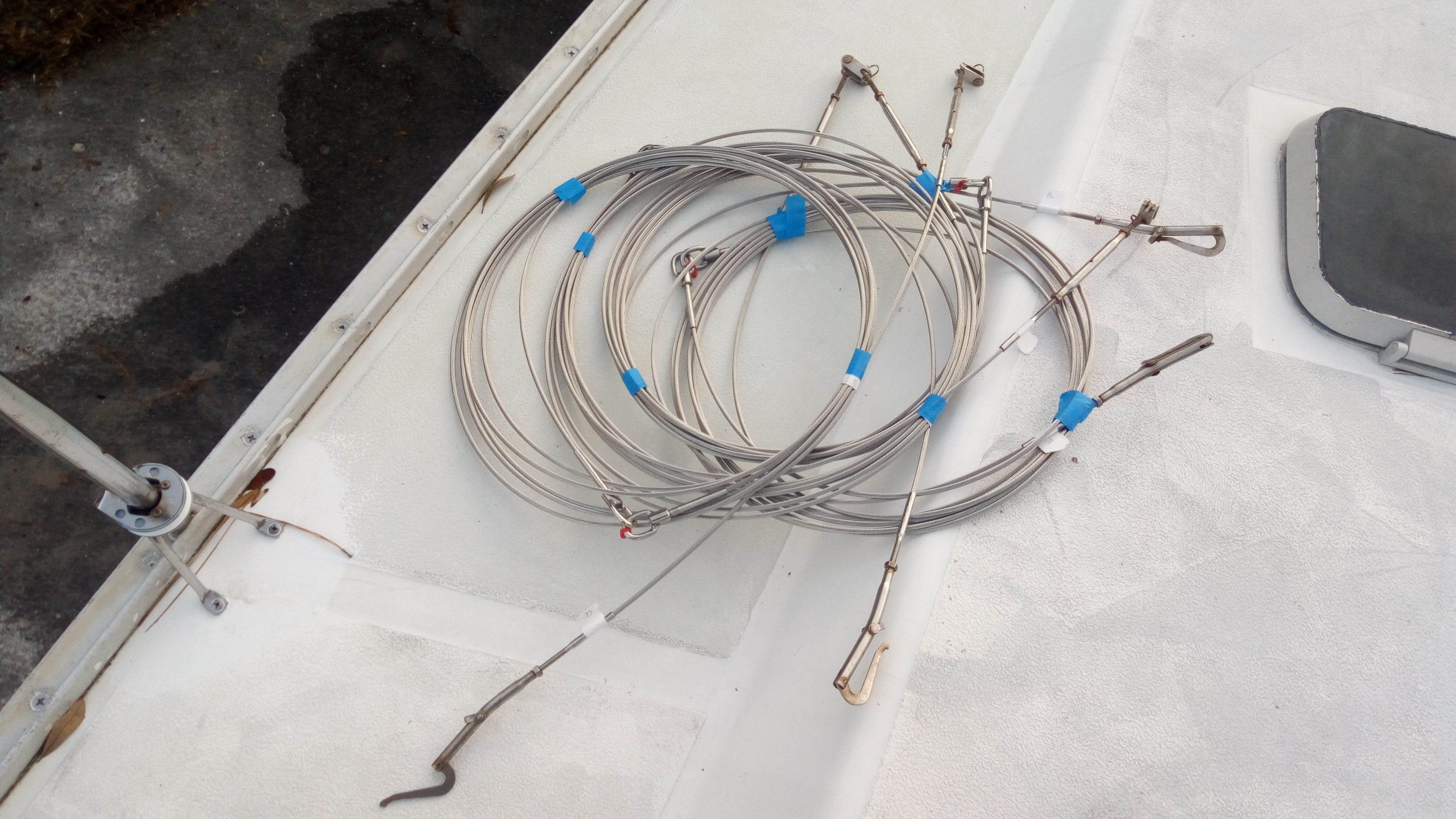
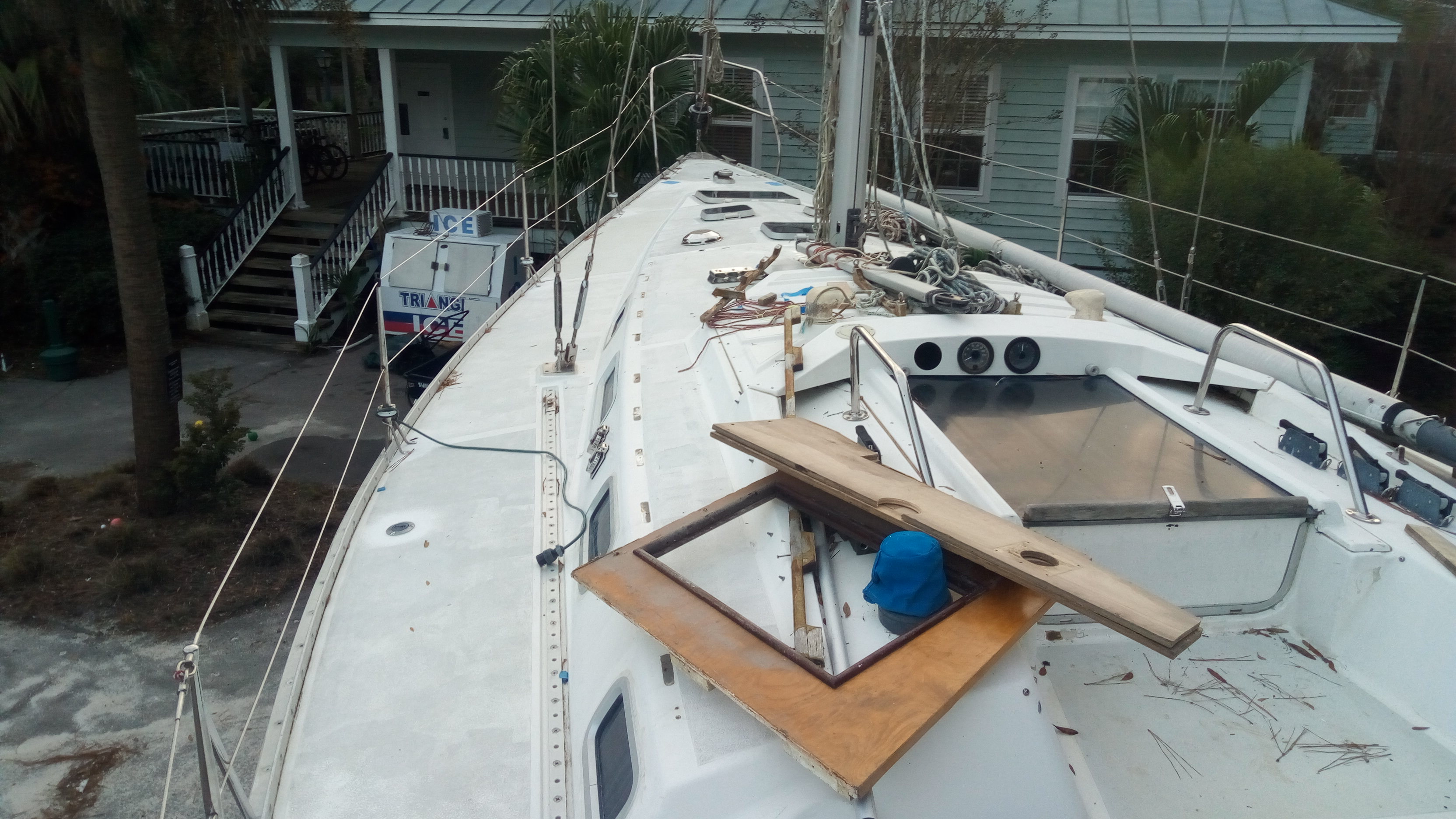
Pocket screws come in SS https://www.kregtool.com/store/c20/kregreg-screws/p302/stainless-steel-pocket-hole-screws/I'm looking at this option, but the need for specialized screws is one of the issues holding me up. Do the screws necessary for the pocket jig come in SS?
Another possible issue with the pocket jig is the pocket itself. Every nook and cranny on a boat will eventually succumb to the dirt monsters, dust bunnys and other gooey goonies. I can see in ten years the pockets being filled with detritus since they will be hidden and hard to clean. The solution is to cover the pockets with plugs but now we're getting into both more work and more permanence, i.e., if/when the cabinet needs to come apart you need to destroy it in the process.
I'm working on a homemade jig to use standard screws with the angled bracket. We'll see how well that works.
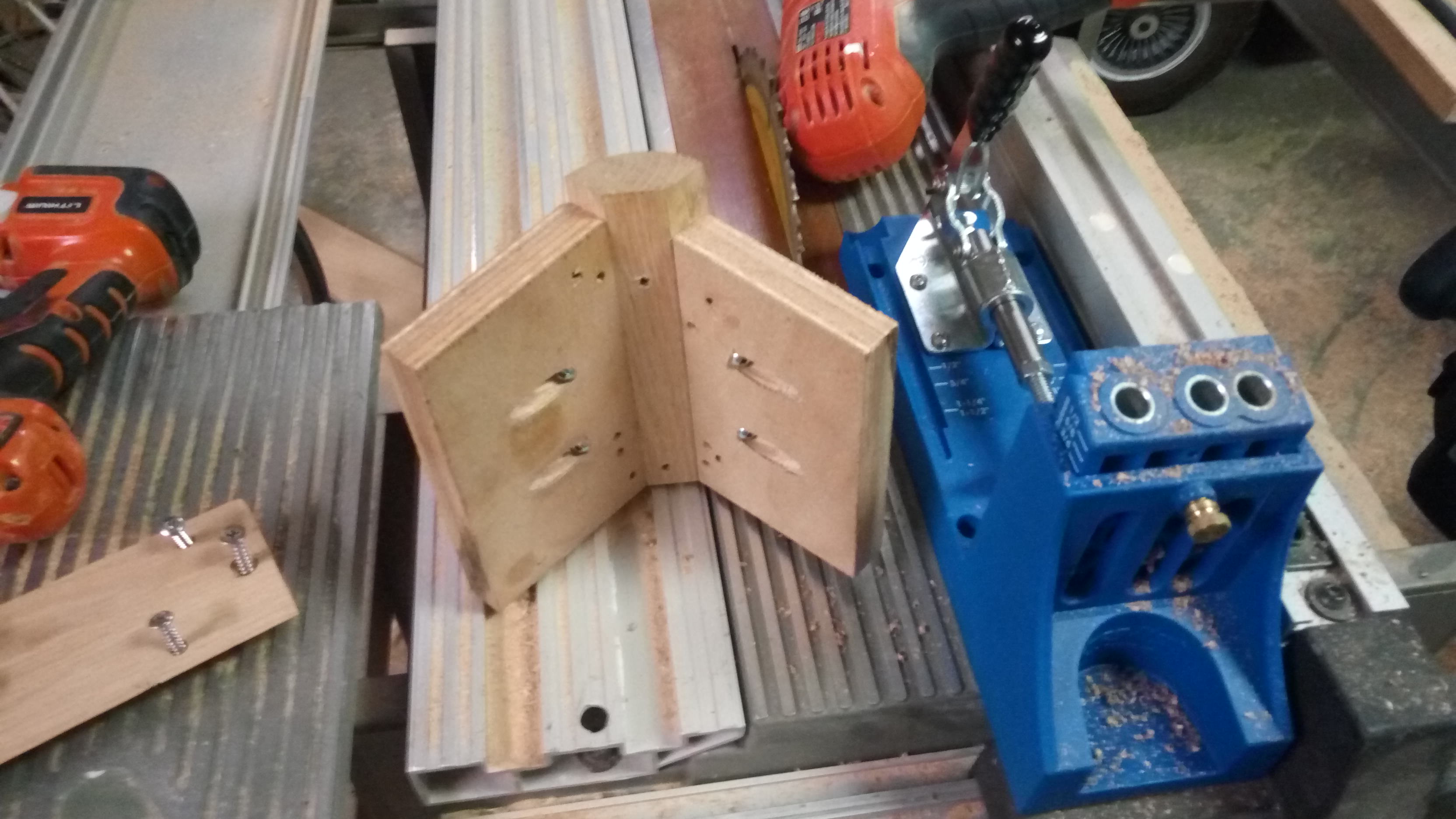
I’m glad you’re too lazy for *something.* Just sayin.Saturday update:
I'm too lazy to look back and see who the first guy was who recommended the Kreg jig,...
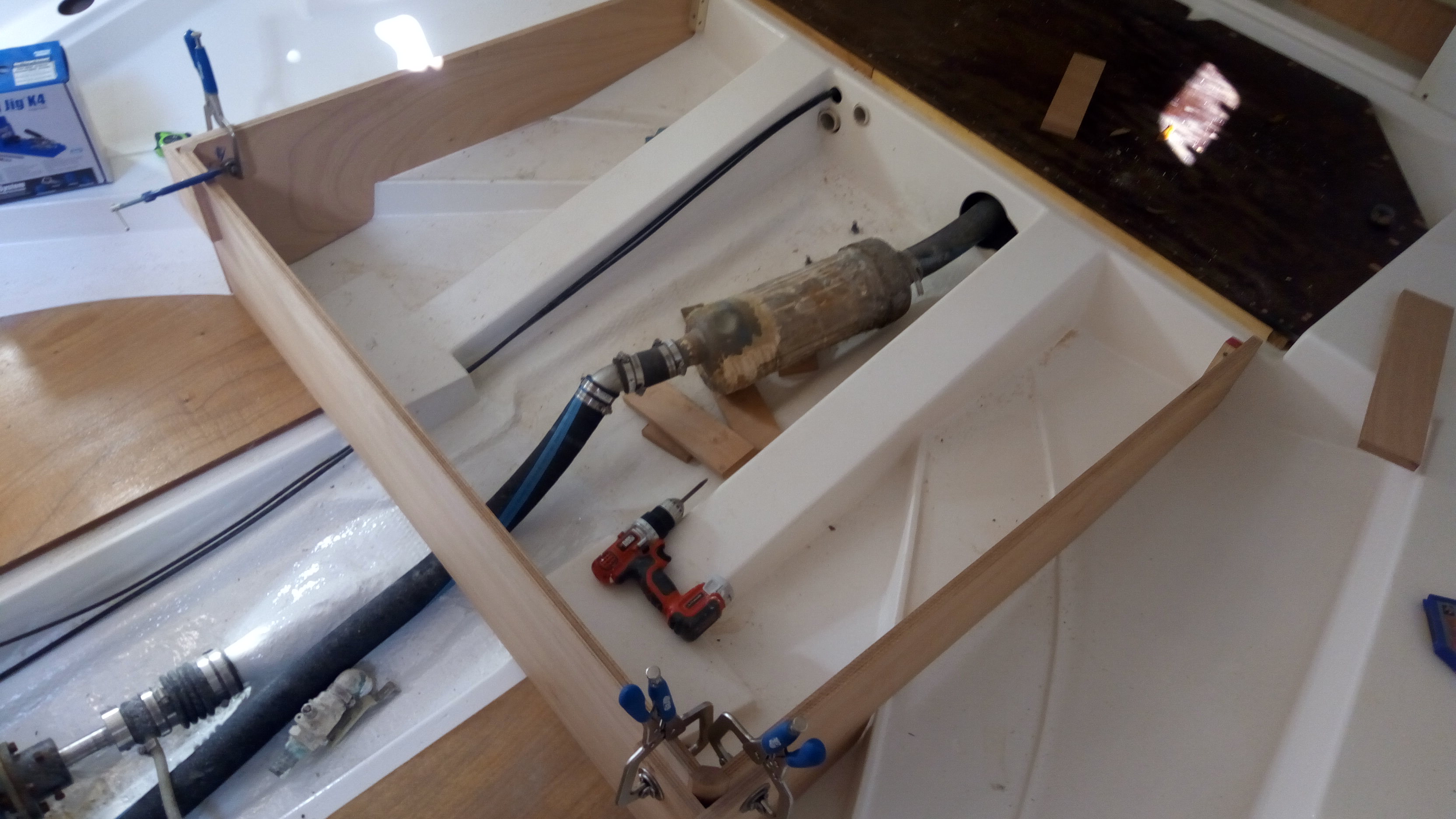
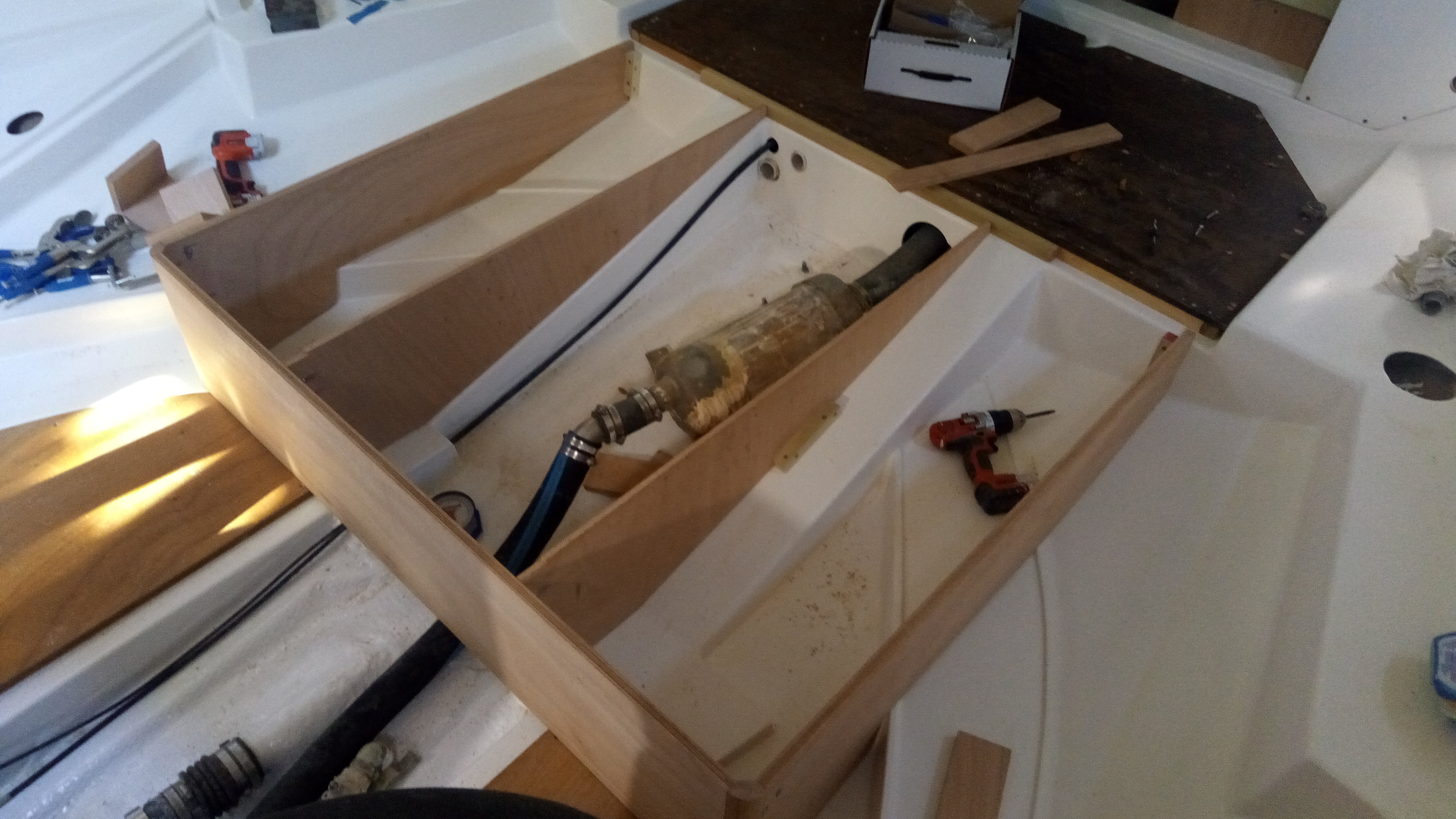
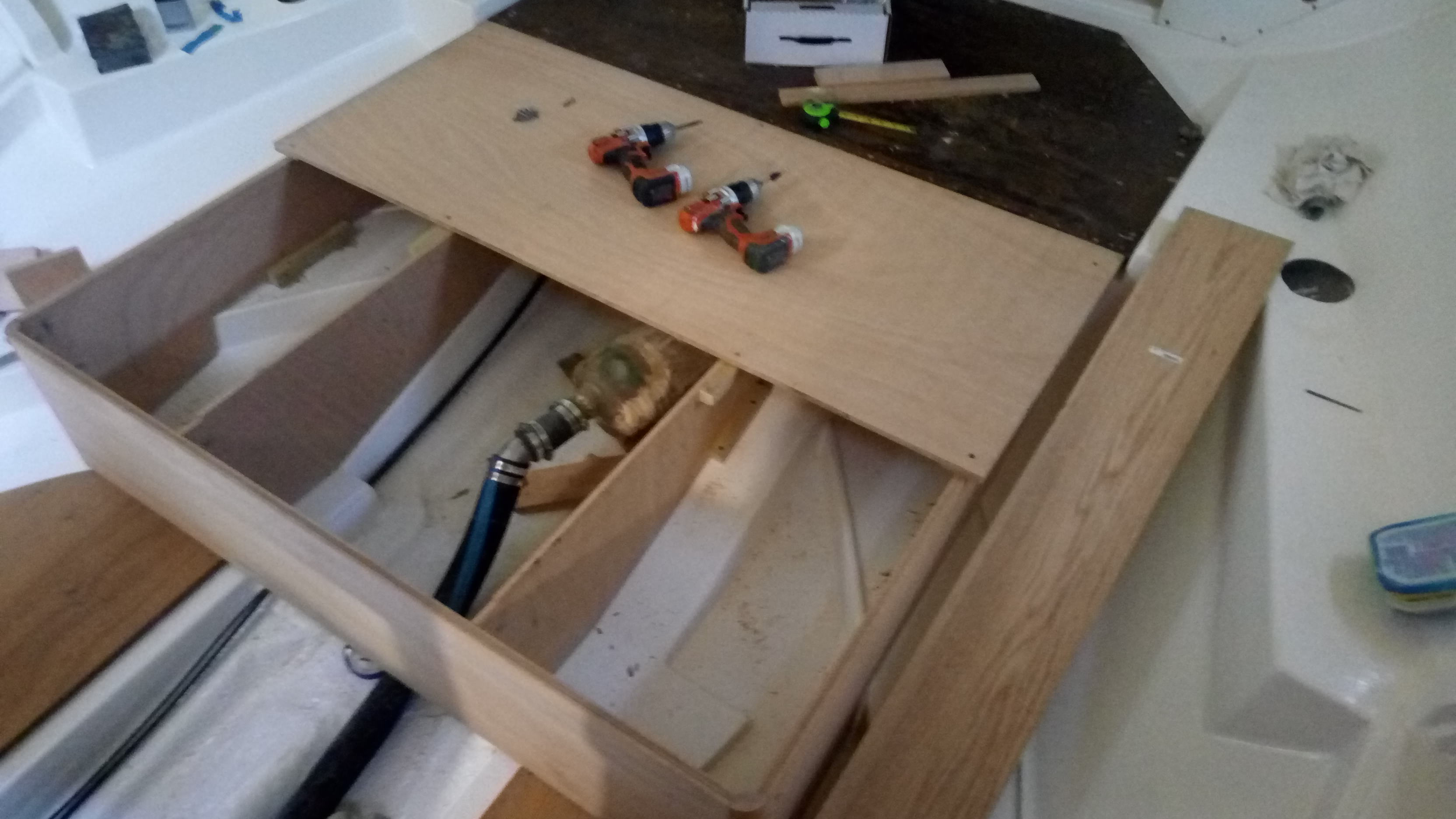
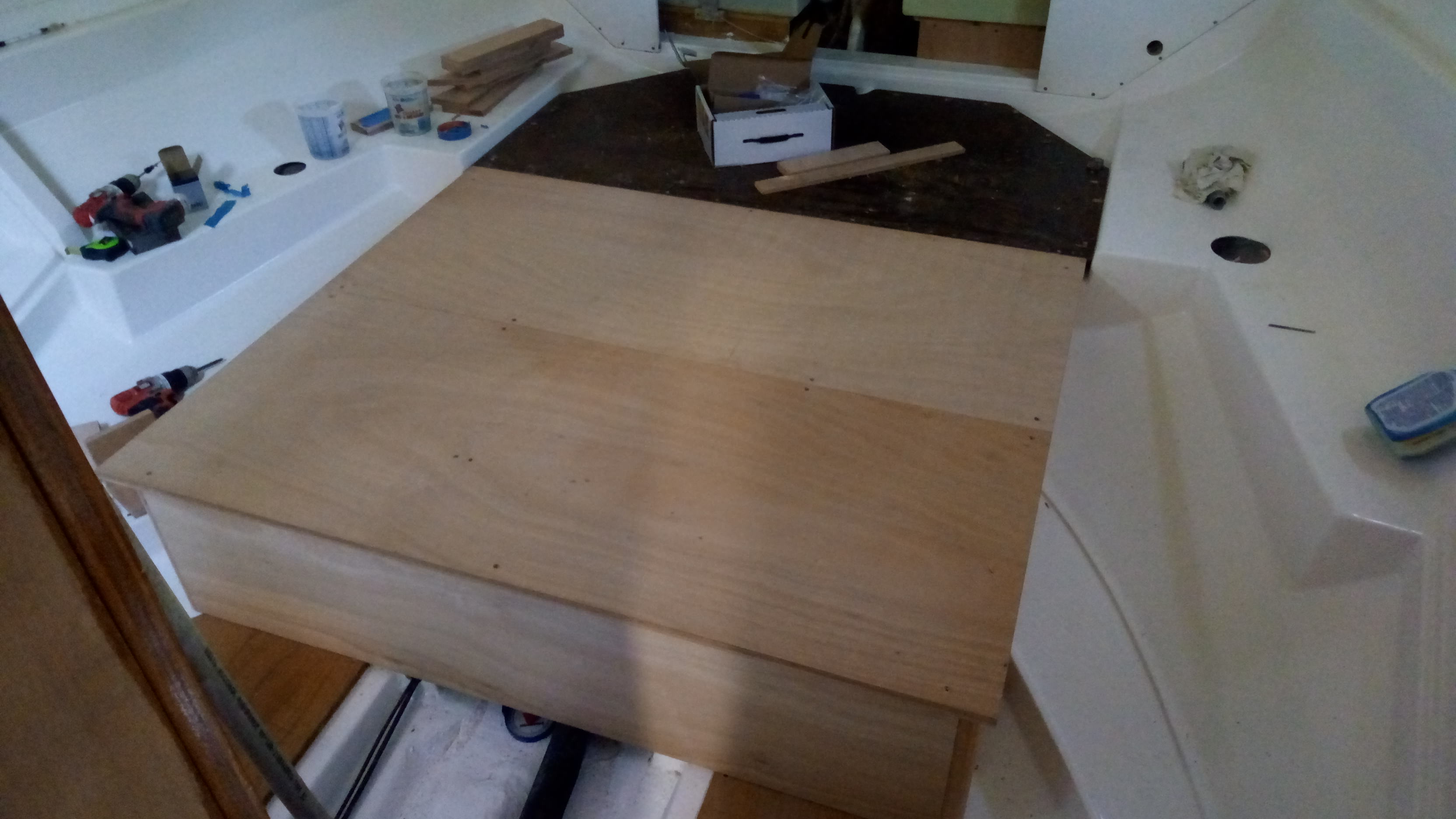
I did. Tried them out and immediately made a return trip to buy more!You went totally crazy on the Kreg Jig clamps to.
BTY: For everyone that pointed out that I said Craig Jig, technically it could be correct, seeing as that is his first name. We used to talk to him back in the old days when he traveled the wood shows hawking his original jig.
